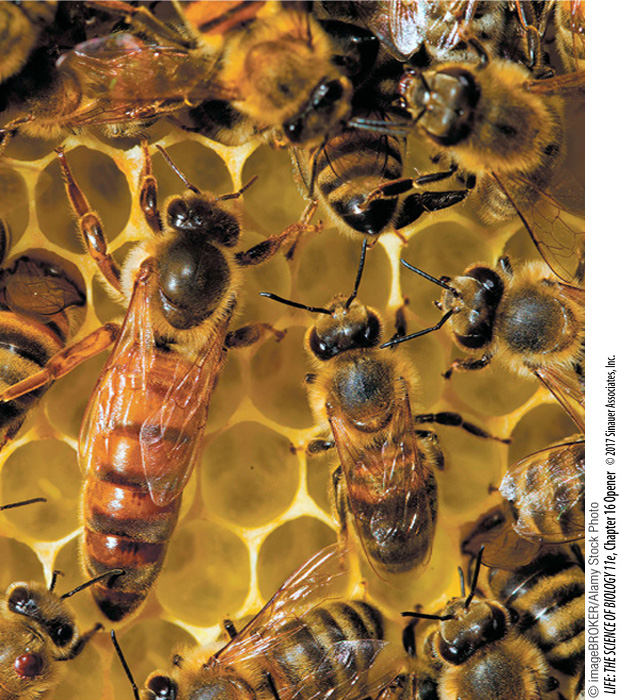Chapter Introduction
16
key concepts
16.1
16.2
16.3
16.4
16.5
Regulation of
Gene Expression

investigating life
Gene Expression and Behavior
Any teenager or parent of a teenager will tell you that those years can be rough. But some young people have a rougher time than others. Teens whose mothers were extremely stressed during pregnancy often have more behavioral problems than those whose mothers had calmer pregnancies. A recent study led by psychologist Thomas Elbert and evolutionary biologist Axel Meyer at the University of Konstanz in Germany suggests an underlying genetic cause for these behavioral differences. The study examined a gene for the glucocorticoid receptor, which is involved in regulating hormonal responses to stress. The researchers found that teenagers whose mothers had suffered physical abuse during pregnancy had higher rates of cytosine methylation in the promoter of this gene than did teenagers whose mothers had not suffered such abuse.

A major control point for gene expression is the promoter, a sequence of DNA adjacent to the coding region of a gene where proteins bind and control the rate of transcription. The ability of these proteins to bind to the promoter is affected by the level of DNA methylation in the promoter. As we mentioned in Key Concept 15.1, in certain regions of DNA many of the cytosine residues have methyl groups added at their 5 positions, forming 5-
Such studies have spawned the new field of behavioral epigenetics. Epigenetics is the study of heritable changes in gene expression that do not involve changes in the DNA sequence. These changes may underlie behaviors in other animals as well. A fascinating example is the well-
Can epigenetic changes be manipulated?